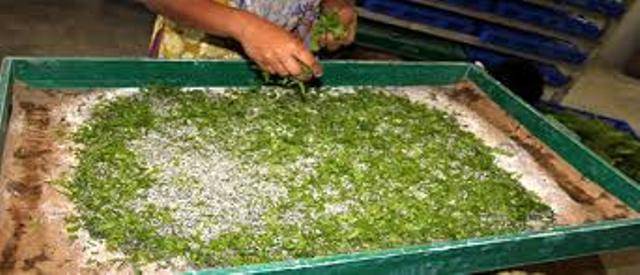
What is Sericulture?
Sericulture is an agro-based industry. It involves rearing of silkworms for the production of raw silk, which is the yarn obtained out of cocoons spun by certain species of insects. Cultivation to feed the silkworms that spin silk cocoons and reeling the cocoons to unwind the silk filament for value added advantages like process and weaving are the major activities of sericulture. Silk has been blended with the life and culture of the Indians.
India encompasses an upscale and sophisticated history in silk production and its silk trade dates back to fifteenth century. Silk is the most elegant textile in the world with distinctive grandeur, natural radiance, and inherent affinity for dyes, high absorbance, lightweight weight, soft touch and high sturdiness and called the “Queen of Textiles” the world over Sericulture business provides employment to roughly 8.25 million persons in rural and semi-urban areas in India throughout 2015-16.
It stands for livelihood opportunity for millions owing to high employment oriented, low capital intensive and remunerative nature of its production. From these, a sizeable number of workers belong to the economically weaker sections of society, including girls. India’s ancient and culture bound domestic market and a tremendous diversity of silk clothes that replicate geographic specificity have helped the country to attain variety one position in silk business.

Silk production in India
India is the second largest producer of silk within the globe. Among the four kinds of silk created in 2015-16, Mulberry accounts for 71.8% (20,434 MT), Tasar 9.9% (2,818 MT), Eri 17.8% (5,054 MT) and Muga 0.6% (166 MT) of the total raw silk production of 28,472 MT.
Mulberry sericulture is principally practised in 5 states i.e. Karnataka, Andhra Pradesh, Assam and Bodoland, West Bengal, Jharkhand and Tamil Nadu are major silk producing states in the country. North East has the distinctive distinction of being the sole region manufacturing four kinds of silk like Mulberry, Oak Tasar, Muga and Eri. Overall NE region contributes eighteen of India's total silk production.

Advantages of Sericulture:
High employment potential
-
60 lakh persons are engaged in various sericulture activities in the country.
-
It is calculable that Sericulture can generate employment @ 11 man days per kg of raw silk production (in on-farm and off-farm activities) throughout the year. This potential ispar-excellence and no other business generates this type of employment, especially in rural areas, hence, sericulture is used as a tool for rural reconstruction.
Eco-friendly Activity
-
As a perennial crop with good foliage and root-spread, mulberry contributes to conservation and provides green cover.
-
Waste from silkworm rearing will be recycled as inputs to garden.
-
Dried mulberry twigs and branches are used as fuel in place of firewood and therefore reduce the pressure on vegetation/forest.
-
Being a labour intensive and predominantly agro-based activity, involvement of smoke-emitting machinery is minimal.
-
Developmental programmes initiated for mulberry plantation are mainly in upland areas where un-used cultivable land is made productive.
-
Intercropping can also be done with numerous plantations.
-
Being a deep-rooted perennial plant it can be raised in vacant lands, hill slopes and watershed areas.
-
Currently, only concerning 0.1 % of the cultivable land in the country is beneath mulberry cultivation.

Women friendly Occupation
Women constitutes over hour of those employed in down-stream activities of sericulture in the country. This is the result of sericulture activities ranging from mulberry garden management, leaf harvesting and silkworm rearing is more effectively taken up by the women folks. Even silk reeling business together with weaving is largely supported by them.
Low Gestation, High Returns
-
Estimated investments of Rs.12,000 to 15,000 (excluding cost of land and rearing space) is adequate for undertaking mulberry cultivation and silkworm rearing in one acre of irrigated land.
-
It takes only six months for mulberry to grow for commencement of silkworm rearing. Once planted, it will go on supporting silkworm rearing year after year for 15-20 years depending on inputs and management provided.
-
Five crops can be taken in one year under tropical conditions.
-
By adopting stipulated package of practices, a farmer can attain net income levels up to Rs.30000 per acre per annum.
Policy initiatives for the development of silk industry
Sericulture is the purposeful area under the Ministry of Textiles. Few of the recent policy initiatives taken by the Ministry to promote sericulture unit are as follows.
-
Sericulture is considered as agriculture allied activity under RKVY. This enables the sericulturists to avail the advantages of the theme for the complete sericulture activities up to reeling.
-
The CSB (Amendment) Act, Rules and regulations are notified by the govt. of country to bring quality standards in egg production.
-
Amendment in Forest Conservation Act to treat non mulberry sericulture as forest based activity enabling the farmers to undertake Vanya silkworm rearing in the natural host plantation in the forests.
-
Anti dumping duty on Chinese raw silk - The Director General of Antidumping & Allied Duties (DGAD), New Delhi has recommended imposition of antidumping duty on Chinese raw silk of 3A Grade & Below in the form of fixed duty of US$ 1.85 per kg on the landed price of imported raw silk vide notification No.14/17/2014/DGAD dated 4-12-2015.
-
CDP-MGMREGA convergence guideline have been finalized and issued jointly by the MOT and MORD. Farmers can avail assistance from MGNREGA scheme to get benefit from these guidelines.
















